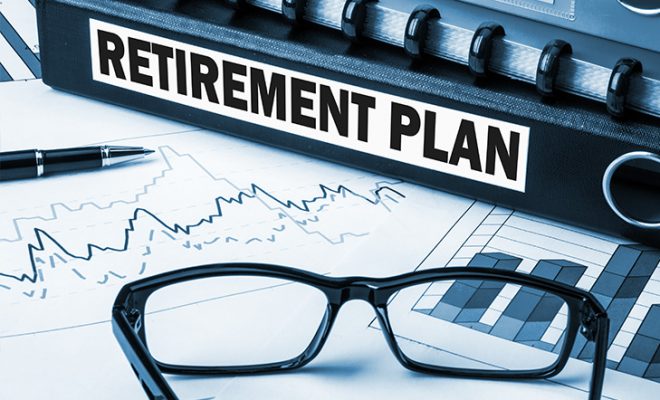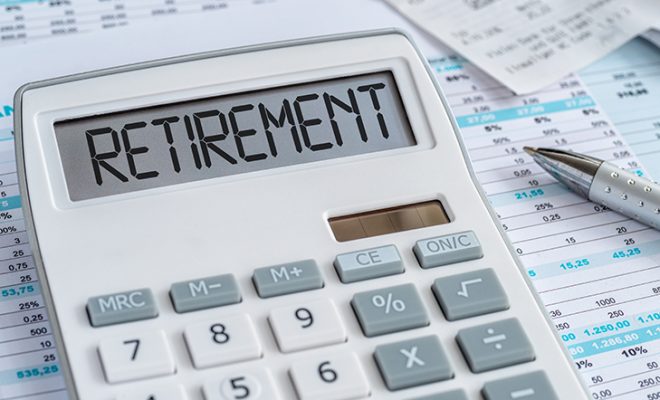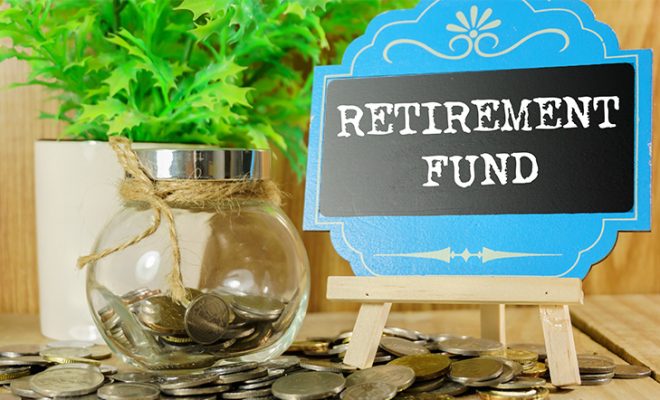Avoid These Hurdles to Protect Your Retirement Plan

Planning for retirement is a pivotal stage in your life, one that demands meticulous attention and careful consideration. Amidst the array of financial decisions you will make, few carry as much weight or consequence as those pertaining to retirement. The choices you make during this period can profoundly shape the quality of your post-career years and influence everything from your standard of living to your peace of mind. Despite its critical importance, the path to a secure retirement is filled with potential pitfalls and hurdles. The road to retirement success is full of challenges, from misjudgments in investment strategies to errors in saving habits.
A financial advisor can help you identify things you should not do in retirement and recommend suitable strategies to safeguard and boost your retirement savings. This article will also explore some of the most common mistakes to avoid in retirement and discuss strategies for navigating them effectively.
Below are some common hurdles an individual may face when saving for retirement and ways to overcome these challenges:
1. Not preparing for long-term care costs
A frequent obstacle individuals encounter in retirement saving is the lack of adequate preparation for long-term care costs. Long-term care includes a wide range of services and support for general health and personal care needs, such as cooking, dressing, bathing, using the bathroom, home-delivered meals, etc. These are also known as activities of daily living. Many retirees may require long-term care as they age, and failing to plan for these expenses can have significant financial consequences.
Long-term care costs have the potential to devastate a retiree’s hard-earned nest egg. According to the Genworth Cost of Care Survey, assuming a 3% inflation rate, the average costs for long-term care services are likely to increase significantly by 2041. The survey found the following:
- Home health care may cost around $111,574
- Assisted living could amount to $97,530
- A semi-private room in a nursing home could reach about $171,400 per year
Despite the substantial financial impact of long-term care, many people overlook this crucial expense. Data from the Administration on Aging and the Administration for Community Living indicate that individuals turning 65 today have an almost 70% chance of requiring some kind of long-term care help as they age. Unfortunately, Medicare and most health insurance plans, including Medicare Supplement Insurance (Medigap), do not cover long-term care expenses. This leaves retirees with the option to rely on Medicaid or purchase private long-term care insurance to mitigate the financial burden. Not preparing for long-term care costs is a common mistake that can significantly impact your retirement savings. With the high probability of needing long-term care as you age, it is essential to include these expenses in your retirement planning efforts and factor in potential long-term care costs when planning for retirement.
Long-term care insurance can be an essential component of retirement planning, as it can help cover various types of long-term care, including skilled and non-skilled care. However, it is necessary to evaluate different insurance policies carefully, as coverage can vary widely. Some healthcare policies may only cover basic nursing home care, while others may include coverage for a broader range of services, including adult day care, assisted living, and medicines and medical equipment.
When considering long-term care insurance, retirees should thoroughly review the policy to ensure it meets their needs. It is crucial to check the desired types of long-term care services and facilities are covered, cover for pre-existing conditions, and more. Additionally, it is advisable to purchase insurance from a reputable company to ensure reliability and compliance with regulations.
2. Failing to consider the impact of taxes
One of the things you should not do in retirement is ignore the impact of taxes. Taxes play a crucial role in retirement planning, yet they are often underestimated or neglected altogether. Failing to account for the tax implications of various retirement income sources can lead to unexpected tax liabilities and diminish the overall value of your retirement savings.
One area where taxes can catch you off guard is Social Security benefits. While Social Security benefits make for a valuable source of income for many retirees, it is not entirely tax-free. Depending on your combined income, a part of your Social Security benefits may be subject to federal income tax. For individuals with combined incomes exceeding $25,000 per year filing individually or $32,000 per year filing jointly, up to 50% of Social Security benefits can be taxed. Moreover, for those with combined incomes above $34,000 (single) or $44,000 (joint filing), up to 85% of benefits can be taxed. Additionally, some states may also tax Social Security benefits, further impacting your overall tax obligations.
Another tax consideration in retirement is Required Minimum Distributions (RMDs) from traditional 401(k)s and Individual Retirement Accounts (IRAs). Once you reach a certain age, typically 72 years, you are required to withdraw a minimum amount from these accounts each year, which is subject to income tax. Failing to plan for RMDs can result in higher-than-expected tax liabilities and may erode your retirement savings faster than anticipated. Furthermore, you must also consider the tax treatment of investment returns and capital gains. Income generated from taxable investment accounts, such as dividends and interest payments, is typically subject to tax. Capital gains earned from the sale of some investments are subject to long- and short-term capital gains tax, with rates varying depending on the holding period and your individual tax bracket.
Diversifying between Roth and traditional retirement accounts can help mitigate tax risks in retirement planning. Roth accounts offer tax-free withdrawals in retirement, as contributions are made with after-tax dollars. In contrast, traditional accounts provide tax-deferred growth, but withdrawals are subject to income tax. Strategically allocating contributions between Roth and traditional accounts can help you create a tax-efficient stream of retirement income strategy tailored to your individual circumstances. In addition to diversifying between Roth and traditional retirement accounts, you can also use accounts like the Health Savings Accounts (HSAs) and 529 plans. HSAs are tax-advantaged accounts available to individuals with High-Deductible Health Plans (HDHPs). Contributions to HSAs are made with pre-tax dollars, reducing taxable income, and withdrawals used for qualified medical expenses are tax-free. Moreover, HSA funds can be used to cover medical expenses tax-free, making them a valuable tool for healthcare planning in retirement. Similarly, 529 plans offer tax advantages for saving for education expenses. Contributions to 529 plans are made with after-tax dollars, but investment earnings grow tax-free, and withdrawals are also tax-free if used for qualified education expenses. While the primary purpose of 529 plans is to save for education, they can also be used for qualified expenses at eligible institutions, including vocational schools and certain international institutions.
Another thing to focus on is the changes in tax legislation, such as the 2017 Tax Cuts and Jobs Act (TCJA), which can impact your tax planning strategies. The TCJA was introduced with several provisions, some of which increased the standard deduction, lowered corporate and estate tax rates, and increased the child tax credit, among other things. However, the act is expiring in 2025. Understanding how changes in the tax law affect your retirement income planning is essential for maximizing your tax efficiency and preserving your retirement savings. Keeping a flexible tax plan that can accommodate such changes is crucial for optimizing your financial situation and minimizing tax liabilities. It is also important to keep yourself updated on changes in tax laws and regulations at the local, state, and federal levels. You must regularly review tax-related publications, consult with tax professionals, and stay informed about proposed legislative changes that could affect your tax situation. This can help you take advantage of available tax deductions and credits to reduce your taxable income and tax liability.
3. Not striking the right investment balance
Finding the right balance between risk and return is crucial when saving for retirement. While investing too aggressively can expose retirees to excessive risk, investing too conservatively may hinder long-term growth potential. A pitfall you need to avoid when deciding on a retirement plan is keeping a poorly allocated investment portfolio. Both extremes, investing too aggressively and investing too conservatively, carry their own set of risks and challenges, especially as you approach retirement age.
During the working years of your life, when you are accumulating wealth, typically spanning from one’s 20s to 50s, the stock market can serve as a powerful tool for building wealth. Investing in equities during this period allows for the potential of significant growth over time, as stocks historically have provided higher returns compared to other asset classes. Stocks can also help beat inflation, which protects the purchasing power of your money over the years. However, as you approach retirement or are already retired, the focus often shifts from accumulating wealth to preserving it. Investing too aggressively, especially in volatile market conditions at this phase, can expose you to substantial risk. While high-risk investments may offer the potential for greater returns, they also carry a higher likelihood of significant losses. Retirees who are heavily invested in equities may face substantial portfolio fluctuations, potentially jeopardizing their retirement savings, income security, and peace of mind.
On the other hand, investing too conservatively out of fear of market volatility is another mistake to avoid in retirement, as this, too, can pose significant challenges. While lower-risk investments may offer stability and security, they often provide lower returns compared to equities. Over time, this conservative approach may not generate sufficient growth to keep pace with inflation and meet retirement income needs. As a result, you risk outliving your savings or not achieving your desired standard of living in retirement.
Investing too aggressively or conservatively can also lead to emotional stress. If your portfolio is too heavily weighted in volatile assets, you may experience anxiety during market downturns. Conversely, if your investments are too conservative, you may feel frustrated by missed opportunities for growth. Achieving the right balance between risk and return is essential for retirement planning. Maintaining a diversified portfolio of assets, including stocks, mutual funds, Exchange-Traded Funds (ETFs), bonds, gold, cash, and real estate, can help mitigate risk while potentially generating the necessary returns to support retirement goals. Diversification spreads risk across various asset classes and lowers the effect of market fluctuations on the overall portfolio. For retirees, a diversified portfolio can serve as a financial safety net during times of market volatility. While equities may experience downturns, other assets such as bonds and cash can provide stability and income. By diversifying your investments, you can better weather market fluctuations while still participating in potential growth opportunities. Additionally, seeking guidance from a financial advisor can help retirees develop a personalized investment strategy tailored to their individual goals, risk tolerance, and time horizon. A financial professional can help strike a balance and provide timely advice and recommendations to help retirees navigate market volatility and make informed investment decisions.
SPONSORED WISERADVISOR
4. Overlooking the perils of longevity
One of the often underestimated obstacles you can face when saving for retirement is longevity risk. This risk refers to the possibility of outliving your retirement income. In 2024, the life expectancy for individuals in the United States stands at 79.25 years, marking a slight increase of 0.18% from the previous year. In 2023, the life expectancy was recorded at 79.11 years. With life expectancies continuing to rise, your retirement planning must account for the potential of a longer lifespan than anticipated. This means that retirees may need to plan for a retirement that spans longer than their projections so that their nest egg can sustain them over the long term, especially considering the impact of inflation on their savings.
Having sufficient cash reserves for immediate and future needs, as well as contingencies, is crucial for navigating retirement successfully. A longer lifespan carries significant financial implications, including increased healthcare costs. As individuals age, healthcare expenses tend to rise, potentially putting a strain on retirement savings. Long-term care considerations also become more prominent, as retirees may require assistance with activities of daily living as they grow older. These factors, along with many others, emphasize the need for sustainable retirement income strategies that can accommodate potential costs associated with old age. Understanding the significance of RMDs in retirement planning is also crucial. With life expectancies on the rise, retirees must carefully consider how RMDs factor into their long-term financial security. Structuring distributions to account for potential longevity helps one better manage their cash flow and ensure they have adequate funds to meet their ongoing expenses. This reduces the risk of prematurely depleting retirement savings and provides greater financial security in later life. It also helps retirees manage the tax implications of their distributions and preserve their retirement savings.
If you run out of retirement savings, you may be forced to rely solely on Social Security benefits or other government assistance programs, which may not be sufficient to maintain your preferred standard of living. This could result in having to make significant lifestyle adjustments or experiencing financial hardship. Without adequate savings, you may become dependent on family members or other sources of support for financial assistance during your retirement years. This can strain relationships and diminish your sense of independence and autonomy. It also leaves you financially vulnerable in your later years when you may need the money the most.
Addressing longevity risk requires careful planning and consideration. It is essential to maintain a diversified investment portfolio. For example, while preserving liquidity is important, you may also want to consider holding onto growth-oriented investments to help keep pace with inflation and preserve your purchasing power over time. Retirees may also benefit from seeking assistance from a financial advisor who can provide tailored expertise and recommendations. A financial advisor can analyze your current financial holdings, identify long-term solutions, and help you avoid potential risks that could jeopardize your retirement security at a later stage in your life.
5. Neglecting emergency savings
Another mistake to avoid in retirement is neglecting your emergency savings. While saving for retirement is undoubtedly important, having a robust emergency fund is equally essential to safeguard your long-term financial well-being. Unexpected expenses can arise at any time, such as a car repair, medical bill, or home maintenance issue. Without adequate emergency savings, these unexpected costs can quickly derail your retirement savings strategy and jeopardize your financial security.
One crucial aspect of building emergency savings is keeping them separate from your retirement accounts. Unlike retirement savings, which are intended for long-term growth and investment, emergency funds serve as a financial safety net to cover unforeseen expenses. Therefore, maintaining a separate base for emergencies is essential to ensure that these funds are readily available when needed without having to dip into your retirement savings prematurely. Moreover, it is necessary to keep your emergency savings in a liquid and easily accessible account. While it is tempting to seek higher returns by investing your emergency fund in the stock market or other assets, doing so can increase the risk of loss and make it difficult to access funds quickly in case of a crisis. Instead, opt for low-risk, liquid vehicles such as a high-yield savings account, where you can easily withdraw funds without penalties or restrictions.
Another critical aspect of managing emergency savings is ensuring that you only use these funds for genuine emergencies. It can be tempting to dip into your emergency fund for non-essential expenses or discretionary purchases, but doing so undermines the purpose of having an emergency fund in the first place. Reserve your emergency savings for true emergencies, such as unexpected medical expenses, major car repairs, or home repairs that cannot be deferred. If you do need to use your emergency savings, it is crucial to replenish the funds as soon as possible. You must treat withdrawals from your emergency fund as loans to yourself, with the intention of paying them back promptly. Establish a plan to replenish your emergency savings over time through automatic contributions from your paycheck or reallocating discretionary funds from your budget. Replenishing your emergency savings promptly ensures that you are prepared for future emergencies and maintains the integrity of your retirement savings strategy.
Furthermore, periodically reassessing your emergency fund needs is essential to ensure that your savings remain adequate. Life circumstances can change over time and affect your financial obligations and the size of your emergency fund. For example, getting married, having children, or purchasing a home may warrant an increase in your emergency savings to accommodate additional expenses and responsibilities. So, make sure to regularly review your emergency fund balance and add to it as needed to align with your current financial situation and goals.
Neglecting emergency savings can have far-reaching consequences for your retirement planning and overall financial well-being. So, prioritize it alongside your retirement savings to achieve greater financial security and peace of mind for the future.
To conclude
Remember that financial mistakes can often be avoided with thorough planning and careful consideration. Take the time and effort to create a foolproof retirement plan that can weather many storms. This involves assessing your financial situation, setting clear goals, and implementing strategies to achieve them. With careful planning and rational decision-making, you can build a retirement plan that provides peace of mind and enables you to live your desired lifestyle in retirement. Seeking help from a financial advisor can also provide valuable guidance and expertise in navigating the complexities of retirement planning. An experienced advisor can help you develop a plan of action that is tailored to your individual needs and goals, ensuring that you are well-prepared for whatever challenges may arise.
Recognizing and addressing potential hurdles can strengthen your financial security in retirement. Use the free advisor match service to get matched with vetted financial advisors who can help identify and avoid potential hurdles to secure your retirement plan and savings. Answer a few simple questions based on your financial needs, and the match tool can help connect you with 2 to 3 financial advisors who are best suited to help you.
For further information on creating a suitable retirement plan for your unique financial requirements, visit Dash Investments or email me directly at dash@dashinvestments.com.
About Dash Investments
Dash Investments is privately owned by Jonathan Dash and is an independent investment advisory firm, managing private client accounts for individuals and families across America. As a Registered Investment Advisor (RIA) firm with the SEC, they are fiduciaries who put clients’ interests ahead of everything else.
Dash Investments offers a full range of investment advisory and financial services, which are tailored to each client’s unique needs providing institutional-caliber money management services that are based upon a solid, proven research approach. Additionally, each client receives comprehensive financial planning to ensure they are moving toward their financial goals.
CEO & Chief Investment Officer Jonathan Dash has been covered in major business publications such as Barron’s, The Wall Street Journal, and The New York Times as a leader in the investment industry with a track record of creating value for his firm’s clients.











